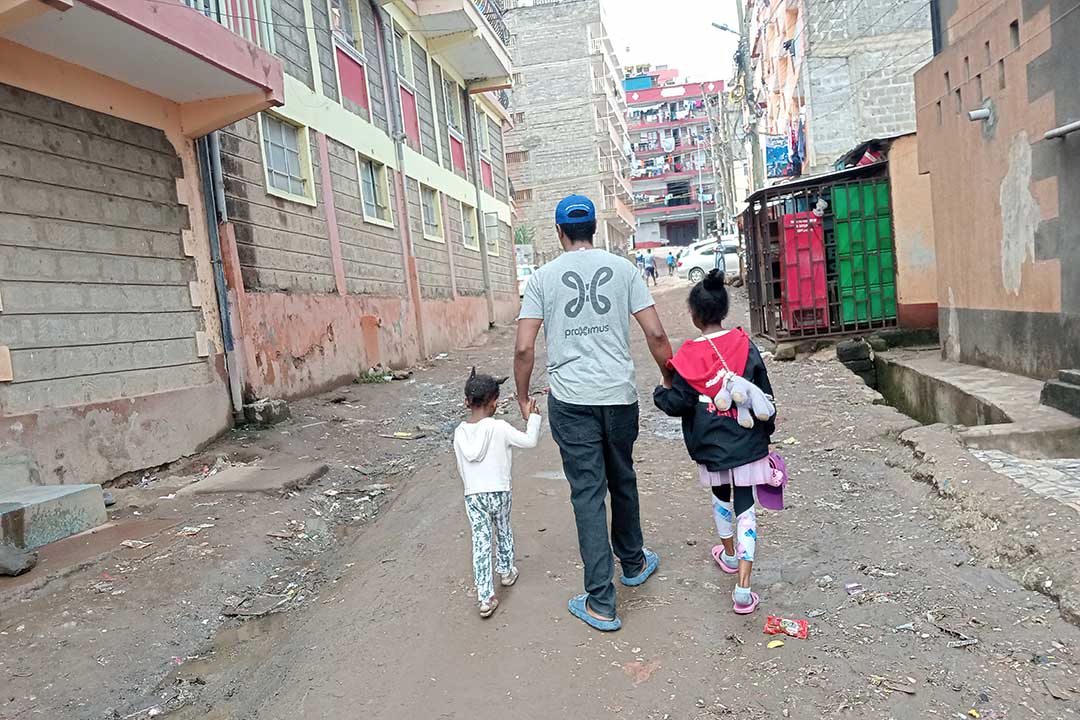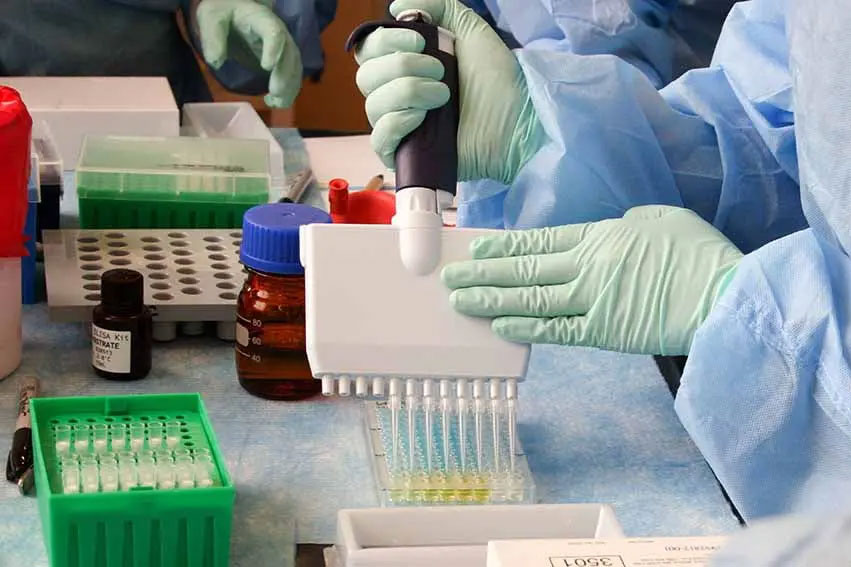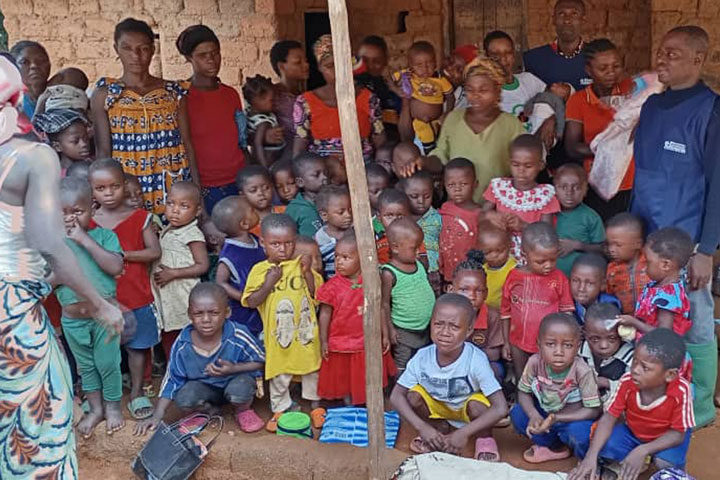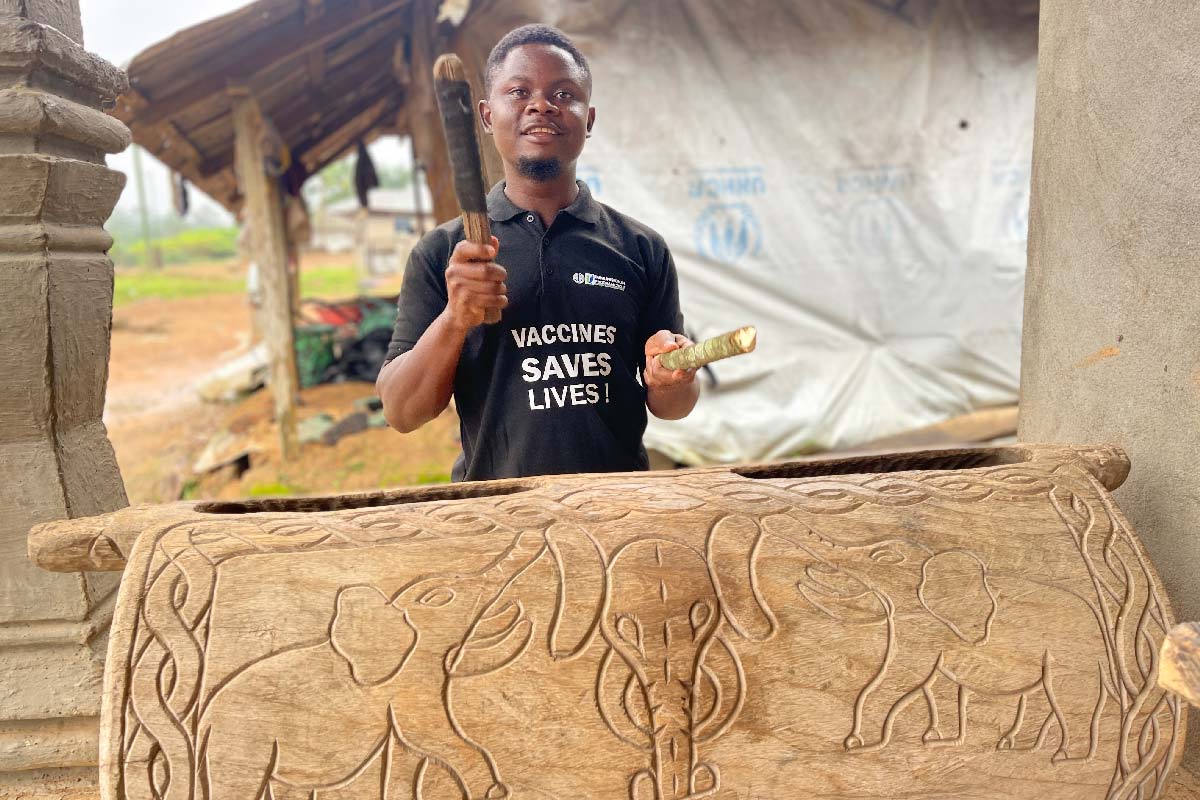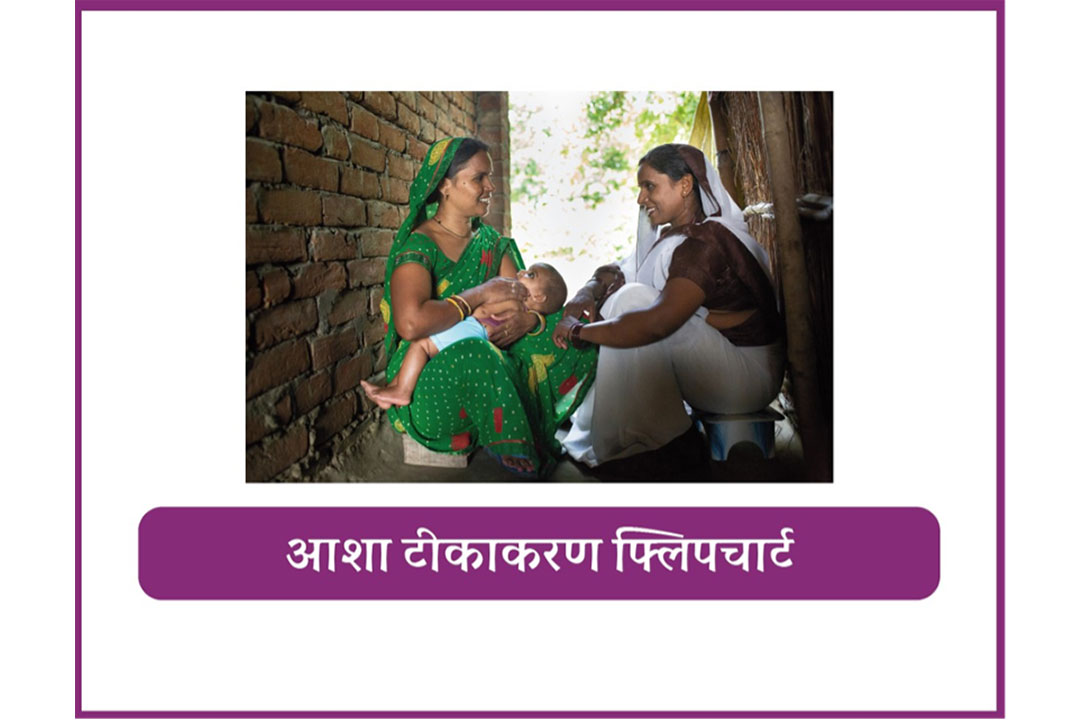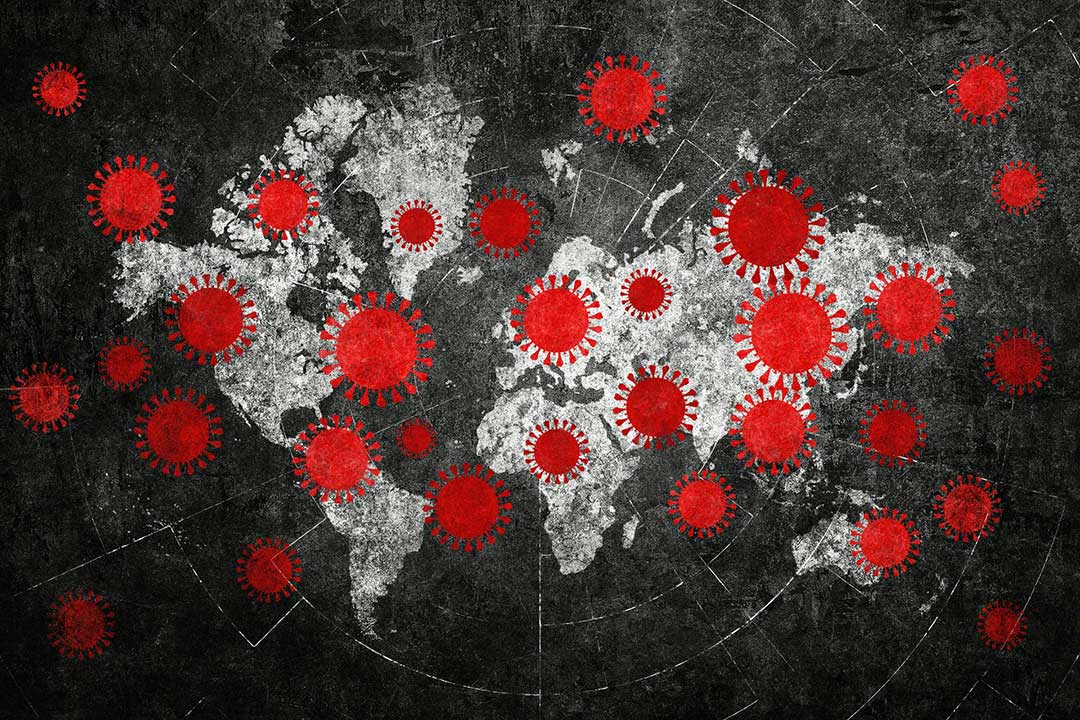In conflict-affected Cameroon, the so-called “Handshake Model” of vaccine delivery just makes sense
Amid violence and health systems collapse, getting vaccines to communities is an unmissable opportunity to bring in other life-altering care, from nutrition, to bed-nets, to psychosocial support.
- 22 July 2025
- 4 min read
- by Delphine Fri Chifor

Cameroon’s Northwest and Southwest regions have been conflict zones for years. As the health system has progressively collapsed, 350,000 children across these regions have been left unimmunised or under-immunised, leading to a surge in both preventable childhood diseases and malnutrition. As of 2024, nearly 20,000 children under five suffered from wasting, with 4,700 of them classified as severe cases.
Children here need vaccines, but vaccines alone aren’t going to solve their health problems. Recognising that, the Cameroon Baptist Convention Health Services (CBCHS), a faith-based non-profit health network and longstanding partner to the government, devised an approach to immunisation dubbed the Handshake Model, which seeks to use vaccination as an entry point to a full spectrum of humanitarian and health interventions.
How CBCHS expands health access through the Handshake Model
At the core of the Handshake Model is strategic coordination. As a first step, CBCHS proactively maps out active humanitarian and health actors in each district, assessing their reach and expertise. This allows CBCHS to build partnerships with NGOs and institutions that can complement its immunisation efforts with broader services.
“Where we work, few partners have access like we do. Coordinated entry increases our collective impact,” said Glory Angu, District Officer for Bamenda.
Through these partnerships, CBCHS transforms vaccination posts into multi-service health hubs. In districts like Nwa and Ako in the northwest region, families can now access malnutrition screening, antenatal care, deworming, WASH interventions, psychosocial support and insecticide-treated nets – all in one visit. This integration increases community uptake and trust, particularly among mothers.
“Once we enter a community, our mandate is to deliver holistic care for the child and the caregiver,” added Angu.
Have you read?
The model has shifted how parents interact with health services. “Hunger is the common denominator here. No mother will miss a chance to receive food or learn how to make it for her child,” explained Kongwi Emmanuel, District Officer for Nwa.
In some remote districts, CBCHS has partnered with organisations like Strategic Humanitarian Services (SHUMAS), whose mission to reduce poverty and improve well-being aligns with the Handshake approach. Together, they have brought life-saving services to communities previously considered inaccessible.
Building trust and creating access by listening, responding, referring
“Our communities were asking for comprehensive care,” noted Epey Margaret, District Field Officer for Fontem and Kumba in the southwest region. “We had to evolve our model to stay relevant and increase demand for immunisation.”
This evolution now includes antenatal care (ANC), minor consultations, and established referral pathways to specialised services. One caregiver in Bamenda shared, “I came only to vaccinate my child. But the health worker noticed his legs were bent and referred us to the Socio-Economic Empowerment of Persons with Disabilities (SEEPD) programme. They assessed him and covered his surgery.” Stories like this are becoming the norm, not the exception.
CBCHS has also integrated community-based nutrition education into its outreach activities. Using local ingredients, caregivers are taught to prepare high-nutrient meals that combat chronic malnutrition. “I used to fear vaccination, but I came to learn how to cook for my malnourished child. I left with knowledge and I was empowered to vaccinate my child too,” shared Alima, a mother in Nwa HD.
Reframing immunisation in fragile settings
The Handshake Model positions immunisation as an entry point, not the end goal. It draws families into care by responding to immediate needs, from malnutrition and antenatal care to psychosocial support. In conflict-affected areas, this approach expands reach, builds trust and meets families where they are.
Despite the operational constraints of fragile settings, CBCHS is reducing the number of zero-dose children while turning vaccination sites into anchors for community resilience. Each session becomes an opportunity to deliver more than a shot – it’s a touchpoint for survival and stability.
This model challenges traditional service delivery. It shows that even in protracted crises, integration is possible and necessary. As health systems in fragile contexts are forced to prioritise, the Handshake Model offers a grounded, scalable strategy: community-driven, multi-service, and equity-focused.
Delphine Fri Chifor is a writer and has worked as a consultant with the CBCHS.
More from Delphine Fri Chifor
Recommended for you


